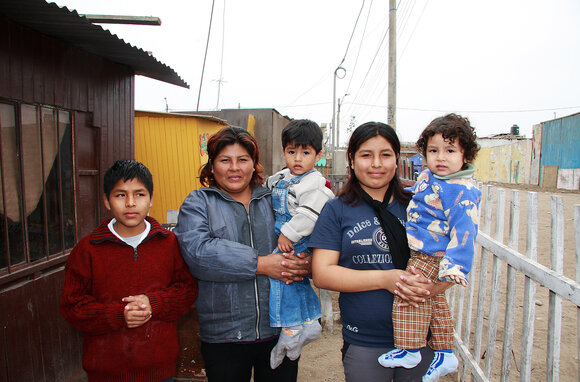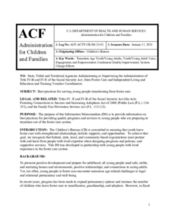This page contains documents and other resources related to children's care in the Americas. Browse resources by region, country, or category.
Displaying 51 - 60 of 3176
Using interdisciplinary analysis, Kit W. Myers examines the adoption of Asian, Black, and Native American children by White families in the United States. He shows how race has been constructed relationally to mark certain homes, families, and nations as spaces of love and better futures—in contrast to others that are not.
The purpose of this Information Memorandum (IM) is to provide information on best practices for providing quality programs and services to young people who are preparing to transition out of the foster care system in the U.S.
In 2020, 4,831 children and youth—roughly 1% of all children in foster care—were reported missing or on runaway status. Further, a National Center for State Legislatures report in 2023 indicated that 1.5 million children (7% of all youth) run away each year, most often due to family conflicts, abuse or neglect.
It was 3 a.m. when they got the call. Staff at the Altadena foster care facility had been monitoring the Eaton Fire since it sparked earlier that evening. But the growing flames looked to be moving in the opposite direction, and their location remained well outside the evacuation zone.
This policy brief explores how extended foster care in the U.S.—enabled by the Fostering Connections Act of 2008—can support young people aging out of foster care by providing critical resources and stable living arrangements through Independent Living Programs (ILPs) and Supervised Independent Living Placements (SILPs). It outlines the challenges these youth face, the evolution of related federal policy, and offers recommendations to strengthen support during their transition to adulthood.
Kin and fictive kin involvement can be protective following maltreatment and contribute to the development of children’s strengths. Findings show that support from kin may positively influence strength development for youth in foster care. Professionals in foster care should prioritize kin involvement to enhance support and develop youth strengths.
This study used a quasi-experimental design to evaluate the Transition to Independence Program (TIP) at Wayne State University in Detroit, Michigan, which provides targeted financial aid, concrete supports, academic coaching, and navigation assistance for college students with foster care experience. Findings show TIP participants had significantly higher retention rates than non-participating peers with foster care backgrounds and performed on par with low-income, first-generation students without foster care experience.
Summary
This role will lead on the development and implementation of a new child-safeguarding programme in Brazil, as well as contribute to the development of Keeping Children Safe globally.
Parenting author Kayla Craig; Lauren Pinkston, Kindred Exchange; Kristin Langrehr, 111Project; and Stephanie Robinson, Faith to Action, share their own experiences of caring for orphans and adoption. Their reflections provide realistic ways to be involved in supporting orphaned and vulnerable children.
In an interview with Time magazine, Donald Trump was asked if would reinstate a policy that separates children of undocumented children from their parents at the southern border. Widely viewed as a cruel and inhumane response to undocumented immigration, the migrant separation policy became one of the most controversial decisions of Trump’s first term. Despite that, the president-elect refused to rule out bringing it back.




